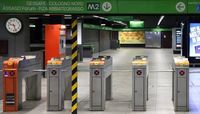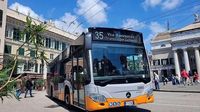On Friday, October 17, 2025, commuters in Genova and several other Italian cities faced significant disruptions as a wave of local public transport strikes swept across the country. The most notable of these was a four-hour strike in Genova, called by the CUB Trasporti union, which left many residents scrambling for alternative ways to get around during the busy midday hours.
According to Sicurauto.it, the Genova strike was part of a broader series of transport stoppages scheduled from October 16 to 18 in major cities like Venezia, Monza, and Catania. While each city’s strike had its own specific rules and timeframes, the Genova protest stood out for its precise coordination and the breadth of its impact on both urban and provincial routes.
The CUB Trasporti union declared that AMT public transport personnel in Genova would abstain from work from 11:30 AM to 3:30 PM. This included not only bus and tram drivers but also staff working in ticket offices and customer service. For those in intermediate shifts, the strike applied to the last four hours of their workday, with ticket offices and customer service desks guaranteed to remain open until 12:15 PM, as reported by LiguriaOggi.it.
The strike also extended to the Genova Casella railway, where both shift and intermediate personnel participated in the work stoppage. In the provincial areas, the same schedule applied: shift workers, including those traveling on provincial routes, walked off the job from 11:30 AM to 3:30 PM, and ticket office staff joined them from 11:45 AM to 3:15 PM. All of this was confirmed by Radio Aldebaran and LiguriaOggi.it, which provided detailed breakdowns of the affected services.
Despite the widespread disruption, there were crucial exceptions to the strike’s reach. Services for people with disabilities were maintained throughout the action, both in urban and provincial areas. In fact, LiguriaOggi.it noted that "the service will be guaranteed for people with disabilities and, in provincial areas, also for elderly people and for pre-booked rental or additional services." This commitment ensured that the most vulnerable residents were not left stranded.
But the day’s chaos didn’t start with the strike itself. Early in the morning, well before the official protest began, heavy disruptions and delays were already being felt in the Val Bisagno area. According to LiguriaOggi.it, a protest by Amiu workers—unrelated to the CUB Trasporti action—caused massive traffic jams that rippled through neighborhoods like Marassi, Staglieno, and Molassana. The combined effect of these two actions left many Genovese frustrated and late for work or appointments.
Elsewhere in Italy, similar scenes played out. In Venezia, the ATVO transport company scheduled a four-hour strike on October 16, affecting airport bus connections from 4:00 PM to 8:00 PM. In Monza and Brianza, a 24-hour strike by NET personnel, organized by the A.L. COBAS union, disrupted both urban and extra-urban lines. The Monza strike was especially lengthy, with interruptions to city lines from 9:00 AM to 11:50 AM and again after 2:50 PM, while extra-urban services from Trezzo sull’Adda were suspended from 8:45 AM to 3:00 PM and after 6:00 PM, as outlined by Sicurauto.it and Mit.
Adding to the nationwide disruption, a national strike in the railway contract sector also took place. Personnel from Elior Divisione Polaris, responsible for services on Trenitalia Intercity night trains, walked off the job from 4:00 PM on October 17 to 3:59 PM on October 18. This action, called by a coalition of unions including FILT-CGIL, FIT-CISL, UILT-UIL, UGL, FAST, and ORSA TRASPORTI, impacted night train services across the entire country, according to Mit.
In Catania, the weekend didn’t offer much relief for travelers either. On October 18, AMTS personnel staged a 24-hour strike, affecting all public transport in the city, including the crucial Alibus service to and from the airport. To mitigate the disruption, certain guarantee periods were put in place, ensuring some level of service from 6:30 AM to 9:30 AM and from 6:00 PM to 9:00 PM, as reported by Sicurauto.it.
While these strikes were not coordinated at the national level, their cumulative effect was felt by thousands. Genova, in particular, saw a convergence of labor actions that brought parts of the city’s transport network to a near standstill. The CUB Trasporti union’s four-hour strike was carefully timed to hit during a busy part of the day, maximizing the impact on both commuters and the city’s logistical flow.
For many Genovese, the strike was more than just an inconvenience—it was a stark reminder of the ongoing tensions between transport workers and management. The demands of the unions, while not detailed in the official statements, typically center on working conditions, job security, and pay. These issues, simmering beneath the surface, occasionally erupt into public displays of collective action that force the city to take notice.
Yet, amid the gridlock and frustration, there were glimmers of resilience. Some residents turned to bicycles or carpooling, while others simply braced for longer commutes and packed buses once service resumed. The city’s commitment to maintaining services for people with disabilities and the elderly was widely praised, offering a small measure of comfort on an otherwise challenging day.
As Italy’s major cities grapple with the fallout from these strikes, questions linger about the future of public transport labor relations. With more strikes threatened in the coming months, both commuters and city officials are left wondering whether lasting solutions can be found—or whether more days like October 17 are just around the corner.





